With origins in the Ghana Empire between the 7th and 13th centuries, the talking drum is one of the oldest instruments in West Africa, not to mention, one of the oldest instruments still in use today. Unlike other drums, talking drums are constructed and played in such a way that they mimic the tonal qualities of speech. This special quality made talking drums incredibly important as a means of communication for West African cultures throughout history.
The Unique Characteristics of the Talking Drum
You’ve very likely seen a talking drum before and didn’t even know it. These medium sized drums have a distinctive hourglass shape with a drum head at each end, often made of goatskin. What gives the talking drum its voice (so to speak) are the many leather cords, or ropes, that run along the body from one drum head to the other.
To play, the drummer tucks the drum under his arm and taps the head with his hand and a hook shaped drumstick. To mimic the stresses and intonations of speech, the drummer simply squeezes the drum between his arm and body, causing the leather cords,or ropes, to change shape.
Uses Throughout History
Uses for the talking drum are as diverse as the cultures that utilize it. While it can be played for ceremonial purposes or as entertainment, the real significance of the talking drum lies in the role it plays in communication. In its earliest form, the talking drum served as an aid to ancient Griot or storytellers. These traveling poets and musicians would use the talking drums to carry on the oral traditions of their cultures.
Later, talking drums were used as a means of inter-village communication themselves rather than accompaniment. Instead of hand delivering a summons or warning from one village to another, a message could be sent directly via drum. Players were taught the corresponding drum phrase for any given word. Messages would then be sent between drum players beginning with the name of the recipient, followed by the name of the sender, and then finally the message.
Styles of Play
Interestingly, the style of drumming changes from region to region, creating dialects of a sort. For instance, in western areas such as Senegal, Gambia, western Mali, or Guinea, the playing style is characterized by rapid rolls and short bursts of sound. Further east, in Burkina Faso, Ghana, eastern Mali, Niger, or Nigeria, the playing style relies more heavily on long, sustained notes that the player bends.
West African talking drums remain popular in the region today, especially in the Senegalese Mbalax music style, and have even found their way into popular culture elsewhere in the world, being featured by artists such as Fleetwood Mac, Erykah Badu, Tom Waits and The Grateful Dead.
Bill Kreutzmann, a drummer with the Grateful Dead with a talking drum, 1982. Photo by: David Gans

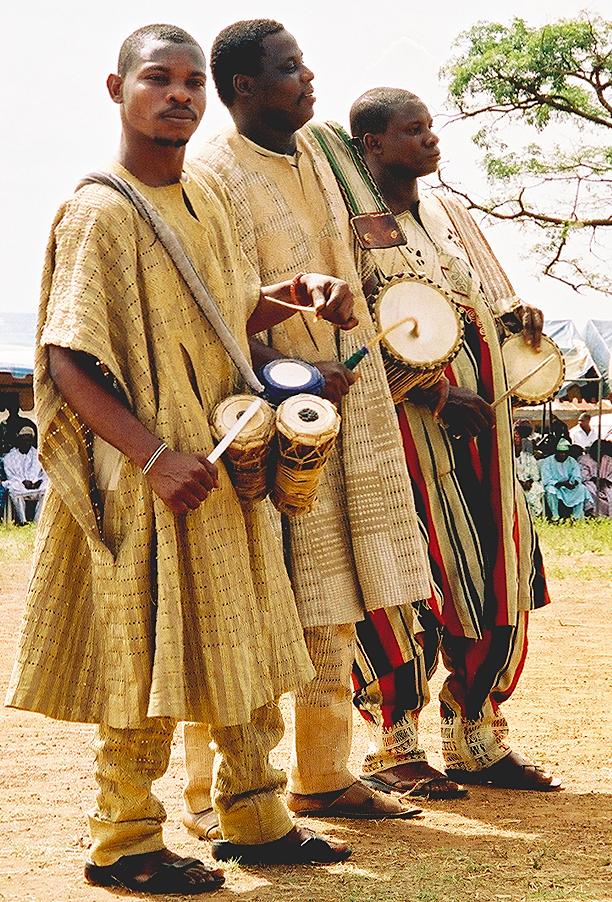


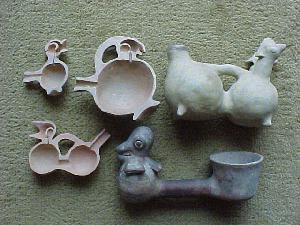
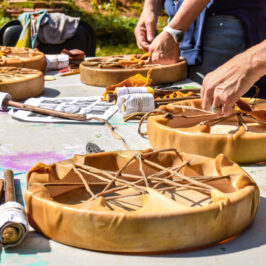
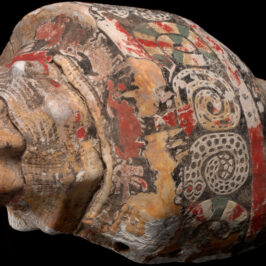
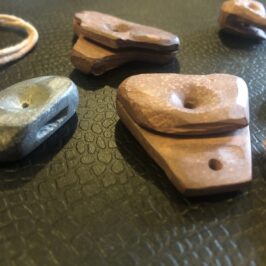

Liam
The talking drum is one of my favorites. I enjoyed reading your article.
Peace!